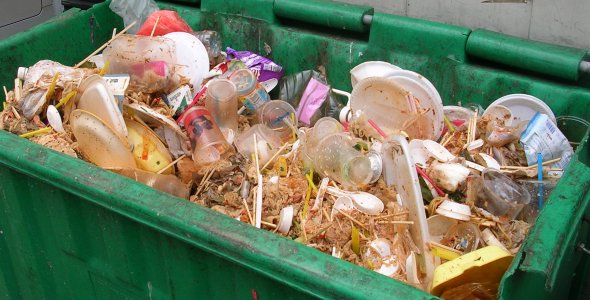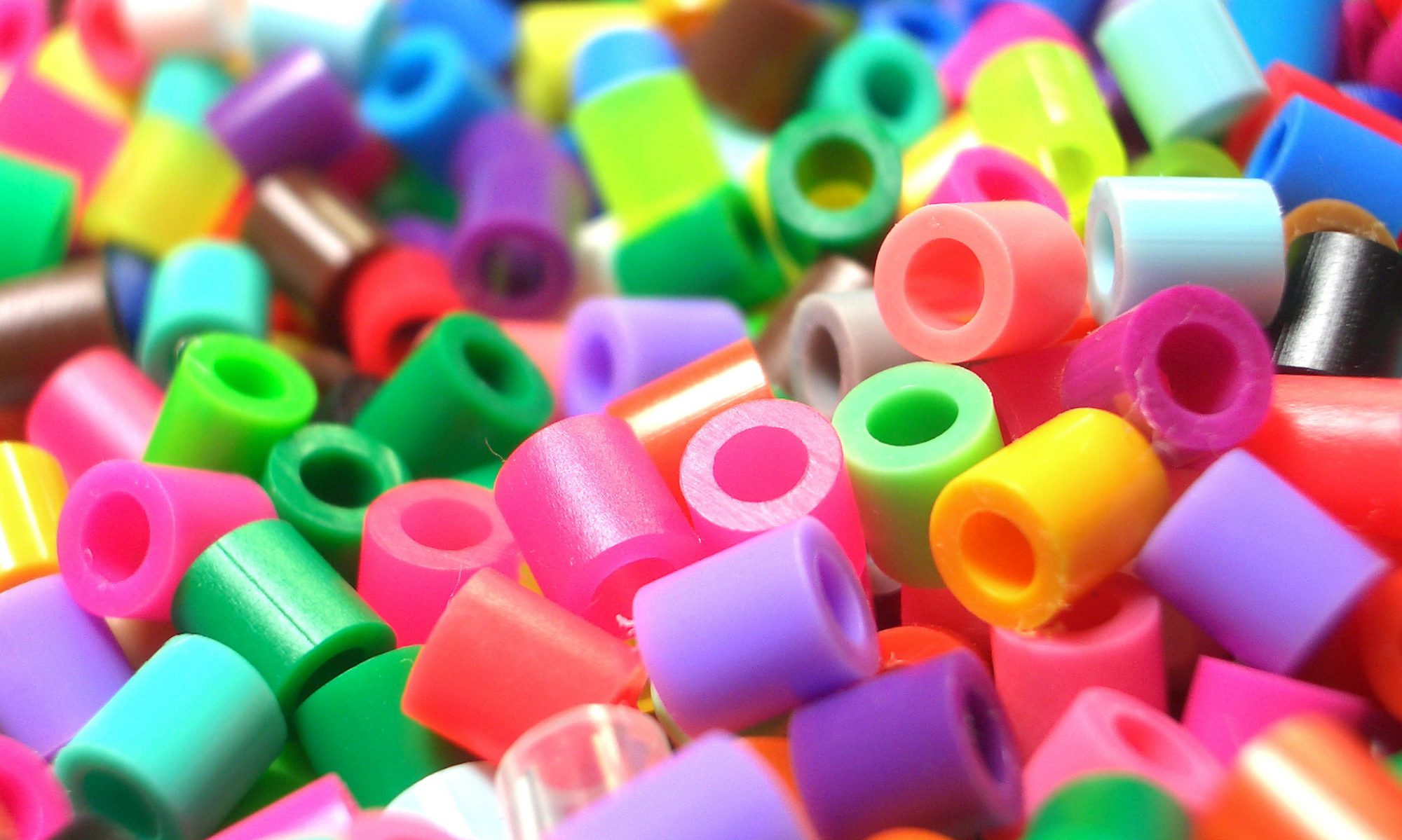The Earth contains an abundant supply of naturally occurring polymers such as wood and silk. Synthetic polymers, on the other hand, are artificial and are very high in demand. Our mobile phones, clothes and bags are some common examples of items that are made up of synthetic polymers. In contrast to natural polymers, these synthetic polymers are non-biodegradable. Scientists estimated that it roughly takes 500 years for plastics to decompose. This inevitably causes harm to the environment. Imagine an Earth covered with plastic instead of soil.

On average, the amount of waste generated by each Singaporean has increased by 200kg by 2014. In 2015 alone, the overall waste generated in Singapore hit 7.67 million tonnes, second highest to 7.85 million tonnes produced in 2013. Singapore relies on incineration plants and only one landfill in Pulau Semakau for solid waste management. A common misconception is that incineration destroys the waste completely. In fact, when the waste gets incinerated, the volume of the waste is efficiently reduced by 90% but not destroyed.
Incineration is undeniably cost-efficient. Despite reducing the volume of waste by 90%, incineration plants generate power. 2% to 3% of the total power generated in Singapore is from the heat produced by the combustion process in incineration plants. However, it brings about health risks. Dioxins gets created during combustion of the solid wastes. Dioxins are very harmful as they are known to increase rates of cancer growth.
After incineration, the waste is then sent to Pulau Semakau, Singapore’s sole landfill. Pulau Semakau’s estimated total capacity is 63 million cubic metres. By 2045, all the cells in this island will be filled up.
What happens after 2045? Where do we store our solid waste? How do we prevent this from happening?
In order to maintain Earth’s sustainability, let’s implement the 4Rs: Reduce, Reuse, Recycle and Recover. This concept is crucial to ensure environmentally-responsible consumer behaviour.
REDUCE
Reduce: Limit the amount of solid wastes whenever possible. Practice “sufficiency” in consumption by buying and using only what is needed.
- You don’t need the latest model. You don’t need the new iPhone 7 because your iPhone 6 still works fine
- Reduce usage of plastic or paper bags by bringing your own shopping bags
- Avoid using disposable wares. Use reusable containers instead
- Write/Print on both sides of paper
- Use refillable items such as soap dispensers and stationaries
- Buy durable items that last long
—
The Dangers of Burning Plastics
While burning plastics may seem the best way to reduce the volume of plastic waste for land constraint Singapore, it is harmful to human health. One of the commonly used plastics is polyvinyl chloride (PVC), which is used to manufacture bottles, containers and plastic packaging. When PVCs are burnt, carbon monoxide, dioxins and furans are produced. Carbon monoxide is produced during incomplete combustion of plastics, while dioxins and furans are toxic organic compounds which are produced when chlorine and hydrocarbons are heated at high temperatures.
Health impacts from burning plastics
Carbon monoxide can lead to poisoning and even death. On the other hand, dioxins and furans can cause allergies, respiratory disease, hormonal imbalance, impotence, and cancer.
In Seveso, Italy, where toxic dioxin was released, fewer boys are born and some girls experience early puberty. Studies have also shown a 55 per cent increase in testicular cancer between 1979 and 1991 in the UK.
—
REUSE
Why Reuse Plastics?
Since incinerating plastic waste produces harmful gases, and disposing large amounts of plastics is not viable for Singapore due to limited land space, we should reuse plastics.
 Image showing the disposal of plastic and polymer cups and plates in Singapore
Image showing the disposal of plastic and polymer cups and plates in Singapore
Ways to reuse plastics
- Use reusable plastic containers instead of disposable ones when buying food and drinks
- Turn plastic waste into useful items and art
- Impose a levy on plastic use to encourage reuse of plastics
 Image showing the different resin identification codes
Image showing the different resin identification codes
1 Use reusable plastic containers instead of disposable ones when buying food and drinks
Plastic bottles for beverages typically have a resin identification code of 1, and are made from a plastic called polyethylene terephthalate (PET/ PETE). PET bottles are not reusable as it is difficult to clean and bacteria can thrive due to its porous nature. Moreover, PET bottles are not heat resistant and melt when in contact with hot liquid. Therefore, many people practice the buy-and-throw culture after using these PET bottles. Such habits have contributed to more than 60 million PETE bottles being thrown away in the US daily, which accounted to a total of 22 billion PET bottles in the landfills and incinerators annually.
In view of the alarming trend, the use of PET and low grade plastics should be cut down. Instead, reusable plastic containers that are BPA-free should be introduced. Hawker centres and food courts should impose higher costs on disposable plastic containers to change the buy-and-throw culture of plastics.
 Image showing plastic waste filling up landfills in UK
Image showing plastic waste filling up landfills in UK
2 Turn plastic waste into useful items and art
As people become more well-informed about the consequences of plastic pollution, many start practicing the 4Rs of waste prevention techniques, particularly the reuse technique. One such example is Didier Ng, a local designer who reuses waste material and objects, such as plastic bottles, rubber tires, used banners and rice bags, and transforms them into products like lamps, furniture, bags and accessories.
3 Impose a levy on plastic use to encourage reuse of plastics
Numerous countries in the European Union had embarked on a journey to encourage the habit of reusing plastics by imposing plastic-related taxes to deter people from using new plastic bags, and switch to reusable bags instead. For instance, Ireland imposes a €0.22 tax on consumers when they use plastic bags. Results have proven that up to 75% consumers are highly likely to switch to reusable bags to cut costs.
RECYCLE
In 2013, Singapore generated 832,000 tonnes of plastic waste, and of it, only 11% was recycled. There are many types of different plastics in the market. In order simplify the sorting and recycling processes, the United States’ Society of the Plastics Industry (SPI) developed the SPI resin identification code to standardize a marking code that is easy to identify.
As mentioned previously, there are 7 different types of plastics: PET, HDPE, PVC, LDPE, PP, PS and OTHERS. Plastic waste can be divided into pre-consumer and post-consumer plastic waste.
Pre-consumer
• Plastic scraps generated during the manufacturing process
• Easy to recycle as they are clean and homogenous
Post-consumer
• Generated after consumer use
• Difficult to recycle as they are difficult to collect, contaminated and not homogenous
Plastic collectors and traders usually collect pre-consumer and post-consumer plastic waste. Pre-consumer plastic waste are sorted out processed by local plastic recycling companies into small pallets which are used as feedstock for making other plastic products. Some of these pre-consumer plastic wastes are also sorted and exported overseas for recycling. Post-consumer plastic waste such as the PET and HDPE bottles and containers are mostly sorted, baled, and exported overseas for recycling.

http://www.nea.gov.sg/energy-waste/3rs/recycling-processes
At the recycling plant, plastics are manually sorted using optical sensors or a flotation process. This distributes them according to their type and colour. The sorted plastics are then shredded, washed, and melted to produce strands of plastics which are cut into small pellets that are used later as feedstock for the creation of new products. These recycled plastic pallets can be used to make a wide variety of plastic products such as plastic bags, containers, trays, pipes, CD cases, garden furniture, carpets and clothing.
SO WHY RECYCLE?
By recycling plastics, we can save natural resources and reduce pollutant production, allowing us to reduce harm brought to the environment and live more sustainably. The production of plastics requires tremendous amounts of non-renewable resources to manufacture. According to Hageluken and Meskers, 2008, “It is estimated that 4% of the world’s annual oil production is used as a feedstock for plastics production and an additional 3-4% during manufacture”. Furthermore, plastics are non-biodegradable and take hundreds of years to break down. When they are burnt, they produce toxic gases and when they are landfilled, they take up space. This can thus lead to a waste problem.
By recycling, we are able to:
1) Provide a sustainable source of raw materials
Once the plastics are recycled, they are sent to manufacturing industries which convert these plastics into new shapes and products. Less manufacturing of new plastics will be required.
2) Reduces environmental problems
By recycling plastics, there will be less pollution to block drainage systems or harm the ecosystem. Lesser plastics will be sent to inceneration plants and hence, less toxic gases will be produced.
3) Reduces landfill problems
Recycling plastics reduces the amount of plastic waste being brought to garbage landfills. More land can thus be used for other purposes such as for agriculture or human settlement.
4) Reduces energy consumed
Recycling plastics require less energy as compared to manufacturing them from scratch. More energy can thus be used to carry out other processes.
5) Reduces time spent
Recycling plastics require less time as compared to manufacturing plastics from scratch. Valuable time can thus be spent on other activities.
6) Encourages a sustainable lifestyle
Recycling encourages a sustainable lifestyle which can be very economical. It will enable us to reduce the amount of harm brought to the environment and save on invaluable natural resources.
There are many recycling programmes carried out in Singapore. Many of which can be found in schools, home, the office and through public recycling bins.
Stated below are several companies in Singapore that collect, trade and recycle plastics:
800 Super Waste Management Pte Ltd
Asia Asset Recovery Pte Ltd
Chiang Kiong Environmental Pte Ltd
Colex Environmental Pte Ltd
Eco Special Waste Management Pte Ltd
Eveready Manufacturing Pte Ltd
Greenway Environmental Waste Management Pte Ltd
Hao Wei International Pte Ltd
HCG Environment Pte Ltd
Hock Lim Plastic Industry & Traders
KL Enviro Pte Ltd
Mao Feng Recycle Trading Pte Ltd
Plaspulp Union Company
Seah Yong Heng Trading Pte Ltd
SembWaste Pte Ltd
V8 Environmental Pte Ltd
Veolia ES Singapore Pte Ltd
Wah & Hua Pte Ltd
World Metal Recovery Pte Ltd
All of us can play a role in the recycling of plastics. However, before we do so, it is important to remember that we should first REDUCE and REUSE our plastic wastes.


